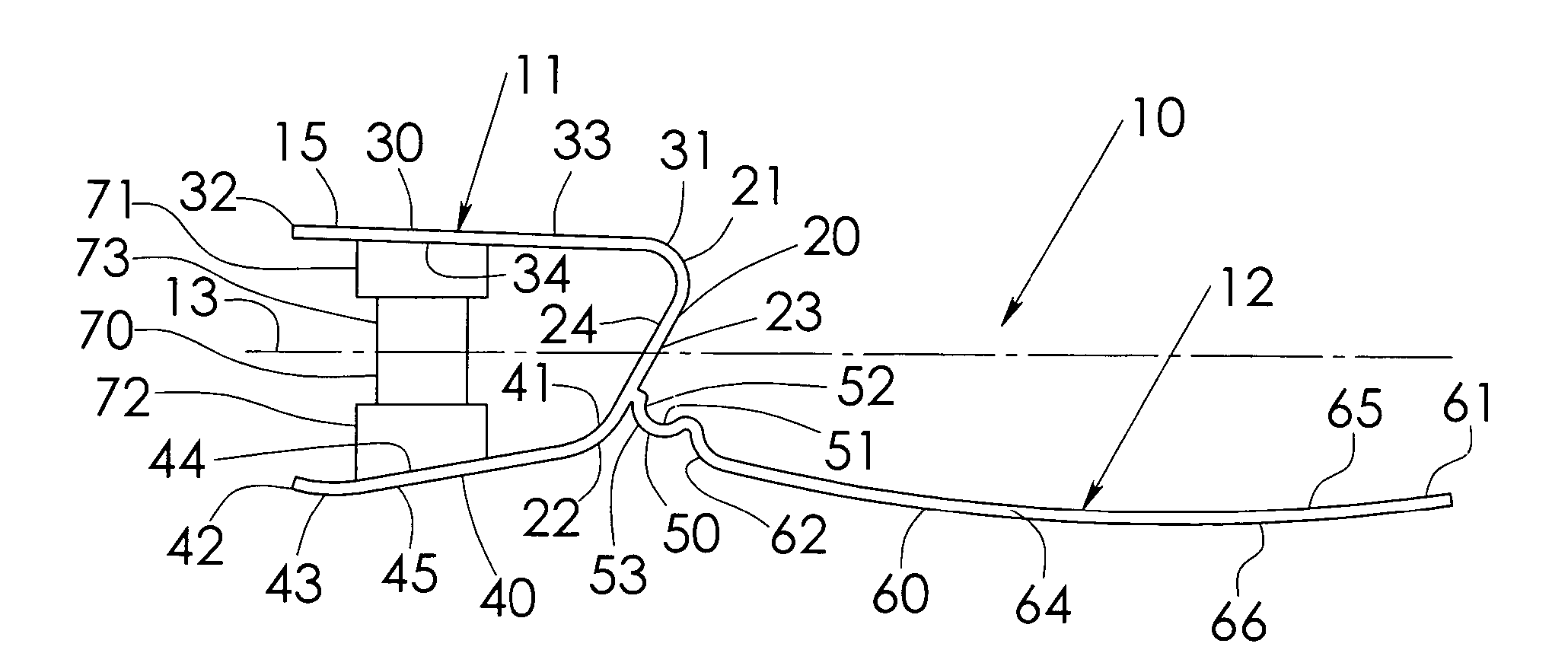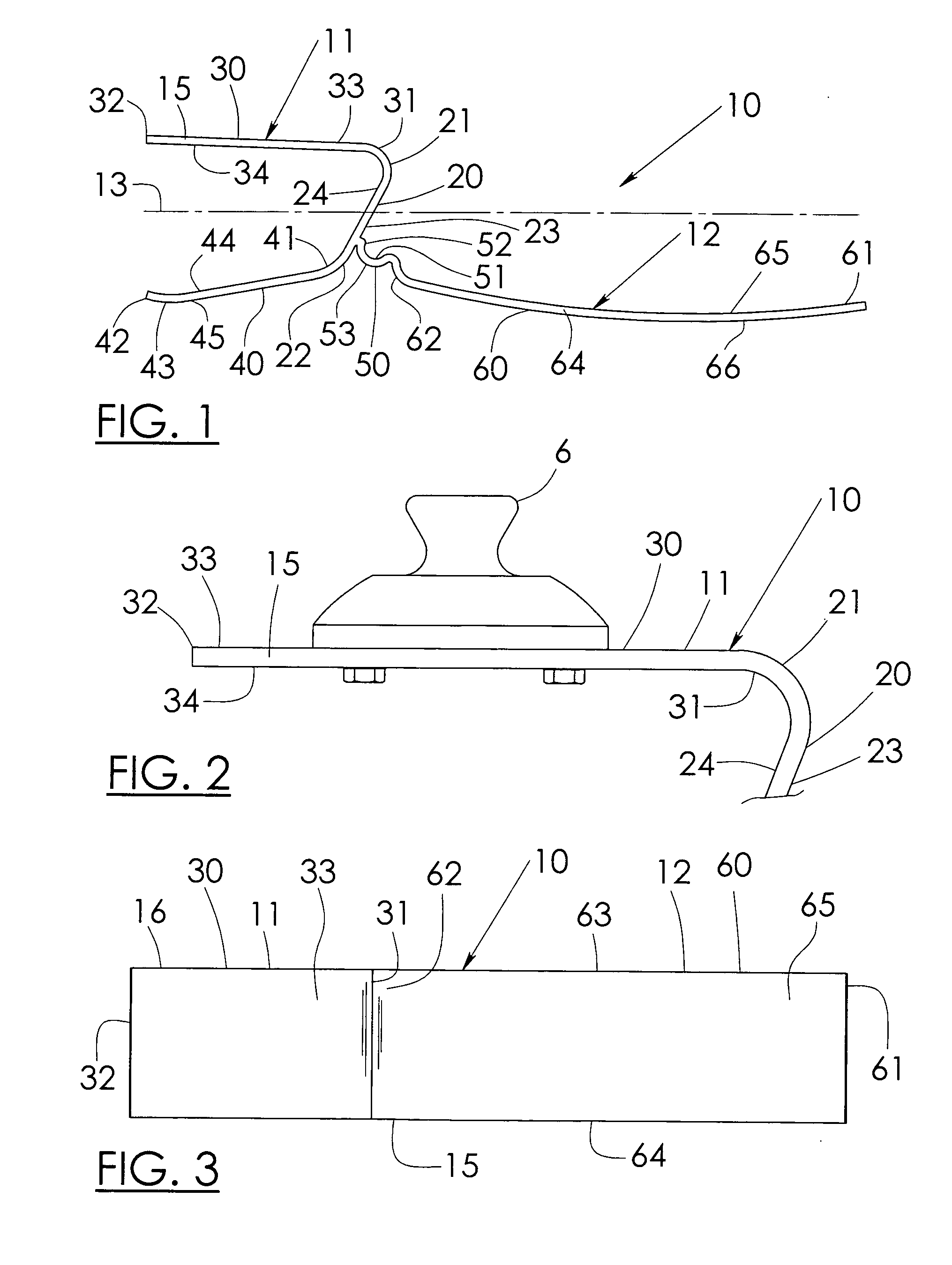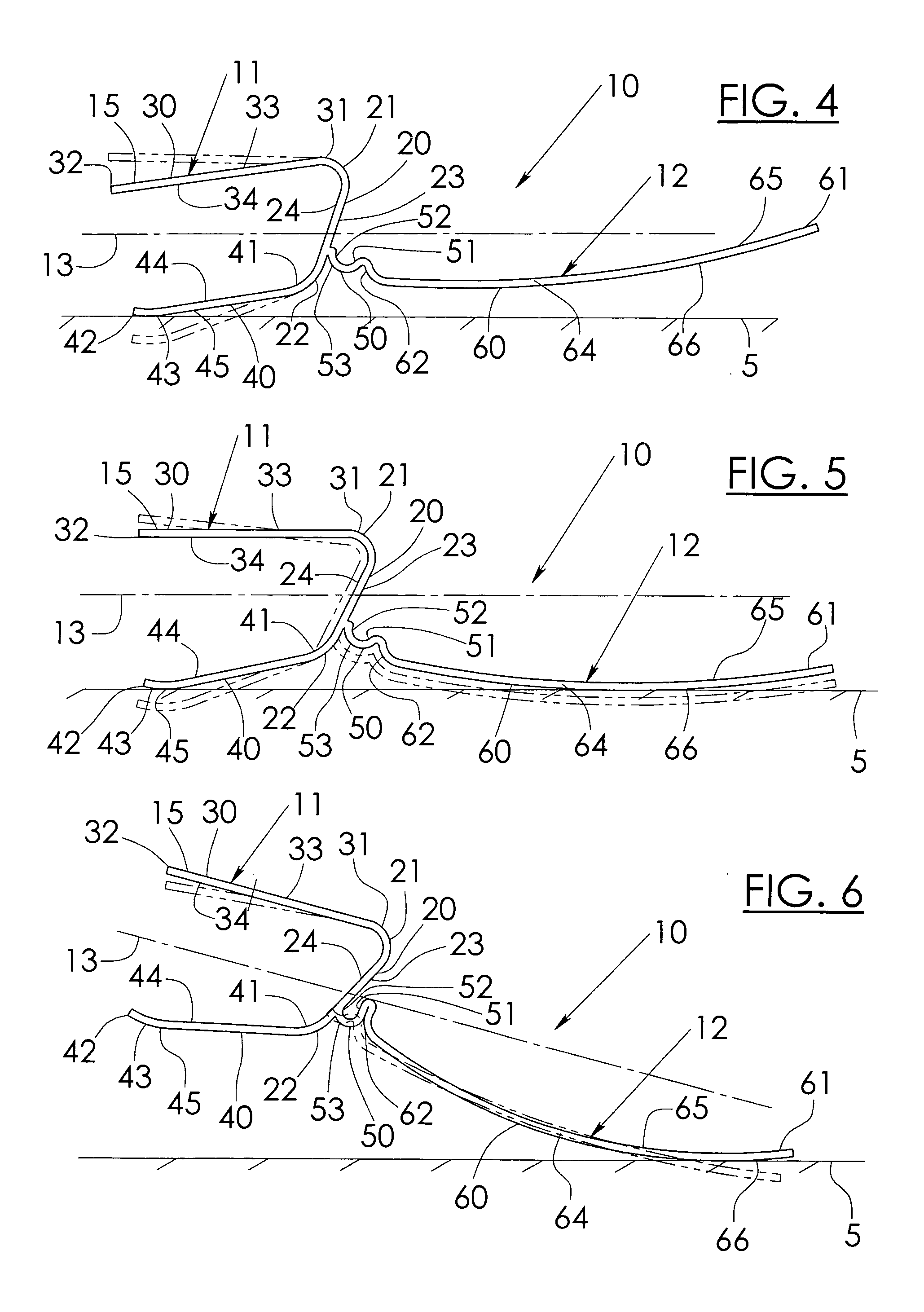Energy returning prosthetic foot
a prosthetic foot and energy-returning technology, applied in the field of prosthetic feet, can solve the problems of complex designs, frequent need for prosthetic limbs, and limitations, and achieve the effects of increasing the adjustability of the prosthetic foot, avoiding undesired noise, and reducing the cost of prosthetic limbs
- Summary
- Abstract
- Description
- Claims
- Application Information
AI Technical Summary
Benefits of technology
Problems solved by technology
Method used
Image
Examples
Embodiment Construction
[0043] While the invention will be described in connection with several preferred embodiments, it will be understood that it is not intended to limit the invention to those embodiments. On the contrary, it is intended to cover all alternatives, modifications and equivalents as may be included within the spirit and scope of the invention as defined by the appended claims.
[0044] The prosthetic foot 10 of the present invention is preferably made from a carbon epoxy composite material. It will be understood that the present invention is not limited to being constructed of carbon epoxy composite material, and that other resilient materials can be used without departing from the broad aspects of the present invention.
[0045] The foot 10 is preferably made in blanks that can be reduced in size to form left and right feet, as desired, and shortened to meet the requirements of a particular person. Several size blanks can be made so that practitioners can select an appropriate blank for a st...
PUM
 Login to View More
Login to View More Abstract
Description
Claims
Application Information
 Login to View More
Login to View More - R&D
- Intellectual Property
- Life Sciences
- Materials
- Tech Scout
- Unparalleled Data Quality
- Higher Quality Content
- 60% Fewer Hallucinations
Browse by: Latest US Patents, China's latest patents, Technical Efficacy Thesaurus, Application Domain, Technology Topic, Popular Technical Reports.
© 2025 PatSnap. All rights reserved.Legal|Privacy policy|Modern Slavery Act Transparency Statement|Sitemap|About US| Contact US: help@patsnap.com



